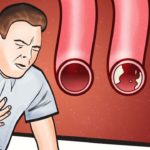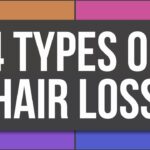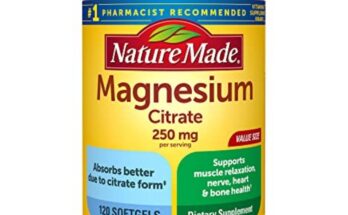Many people start an exercise program with the goal of losing fat, but what many of them don’t realize is that it can be very easy to lose muscle mass along with body fat—if you don’t do it correctly. If you’re going to lose weight and body fat, the best way to do it is by increasing your muscle mass so that you can burn calories at rest. That way, you can get back to the size you want while still being able to eat the foods you enjoy and maintain your fitness level. Here are some tips on how to do it right.
Losing Body Fat Does NOT Mean Losing Muscle
Losing body fat and preserving muscle mass may seem like two conflicting goals, but it is possible to do both at the same time. The key is to focus on losing fat, not weight. Weight includes both fat and muscle, so if you lose weight too quickly, you will end up losing muscle along with the fat.
To lose body fat and preserve muscle mass, you need to do two things: eat a calorie-deficient diet and exercise regularly. Eating a calorie-deficient diet means eating fewer calories than your body needs to maintain its current weight. Eating more will produce a caloric surplus, causing your body to tap into its stored body fat as energy.
Exercise helps preserve muscle mass by increasing protein synthesis and building new muscle tissue.
Why You Need To Preserve Muscle Mass When You Diet
It’s important to preserve muscle mass when you’re trying to lose weight. Here’s why:
- Muscle burns more calories than fat. So, the more muscle you have, the more calories you’ll burn at rest.
- Muscle is more metabolically active than fat. That means it takes more energy for your body to maintain muscle mass than it does for fat.
- Muscle is essential for good posture and joint health.
- Strong muscles make for a great preventative measure against injuries.
- Having a higher percentage of muscle mass has been linked with longevity.
- Muscle is key to a strong immune system.
Why do we even need muscle?
We need muscle for a variety of reasons. For one, muscle is what allows us to move our bodies. Additionally, muscle helps protect our bones and organs. Not to mention, muscle is key in maintaining a healthy metabolism. When we lose weight, we often lose muscle mass as well. But when we lose fat and retain muscle mass at the same time, the result is not only a smaller waistline but also an increased metabolic rate – meaning you’ll be burning more calories even while sitting on the couch!
Don’t Just Exercise, Sprint!
To lose fat and preserve muscle mass, you need to do more than just exercise. You need to sprint! Sprinting is a high-intensity activity that helps you burn more calories and fat in a shorter amount of time than other forms of exercise. Plus, sprinting helps you preserve muscle mass by using more muscles at once.
With the help of an interval training workout, this type of workout will give you an all-over body workout. Sprint for 30 seconds followed by walking for 30 seconds for 12 minutes total. Repeat 3 times with a 5-minute break in between intervals.
Eat for Size, Not for Health
One common mistake people make when trying to lose fat is thinking they need to skimp on calories. They end up eating tiny portions of food that are devoid of nutrients. Not only does this slow down your metabolism, but it can also lead to muscle loss. Instead of eating for health, eat for size. Make sure you’re getting plenty of protein and calories so your body has the fuel it needs to build muscle and burn fat. You should be eating enough food to feel satisfied, not hungry.
By including healthy fats in your diet, you’ll have a steady stream of energy all day long while boosting metabolism and controlling hunger hormones like ghrelin and leptin. For example, eggs contain six grams of protein in one egg with only four grams of carbs; this makes them a great breakfast option or post-workout snack! You don’t have to avoid carbs altogether if you want an energy boost before training; just don’t go crazy with them.
Eating with Purpose – Macro Tracking
One of the most effective ways to lose fat and preserve muscle mass is by macro tracking. This means being aware of the macronutrients (protein, carbohydrates, and fat) in the foods you’re eating and making sure you’re getting the right ratio for your goals. For example, if you’re trying to lose fat, you would want to eat more protein and fewer carbs. If you’re looking to build muscle, the opposite would be true.
In order to determine how many grams of each nutrient a certain food contains, use calculator or online app available online. You can also use apps which will calculate your macros for you based on what you enter as food or drink items into its database – it’s also a great tool because it tracks calories and provides feedback on areas where changes could be made so that weight loss or gain are possible with adjustments over time!
Experiment with Low Carb Diets
Losing weight with a low-carb diet has been proven to be effective. They can help you lose fat while preserving muscle mass. Try experimenting with different types of low carb diets to find one that works for you. Follow a diet that includes healthy protein and fats, and be sure to drink plenty of water. If your diet does not provide these nutrients in adequate amounts, it will take a toll on your performance at the gym and in other activities.
Understand Metabolic Adaptation
When you first start dieting, you can lose a lot of weight quickly. But as you continue to diet, your body adapts and weight loss slows down. This is because your body is trying to conserve energy by burning fewer calories. To keep losing weight, you need to keep your metabolism guessing by making small changes to your diet and exercise routine. Make sure that you are getting enough protein in your diet to maintain muscle mass, but avoid too much fat or carbs which will slow down the weight loss process.






